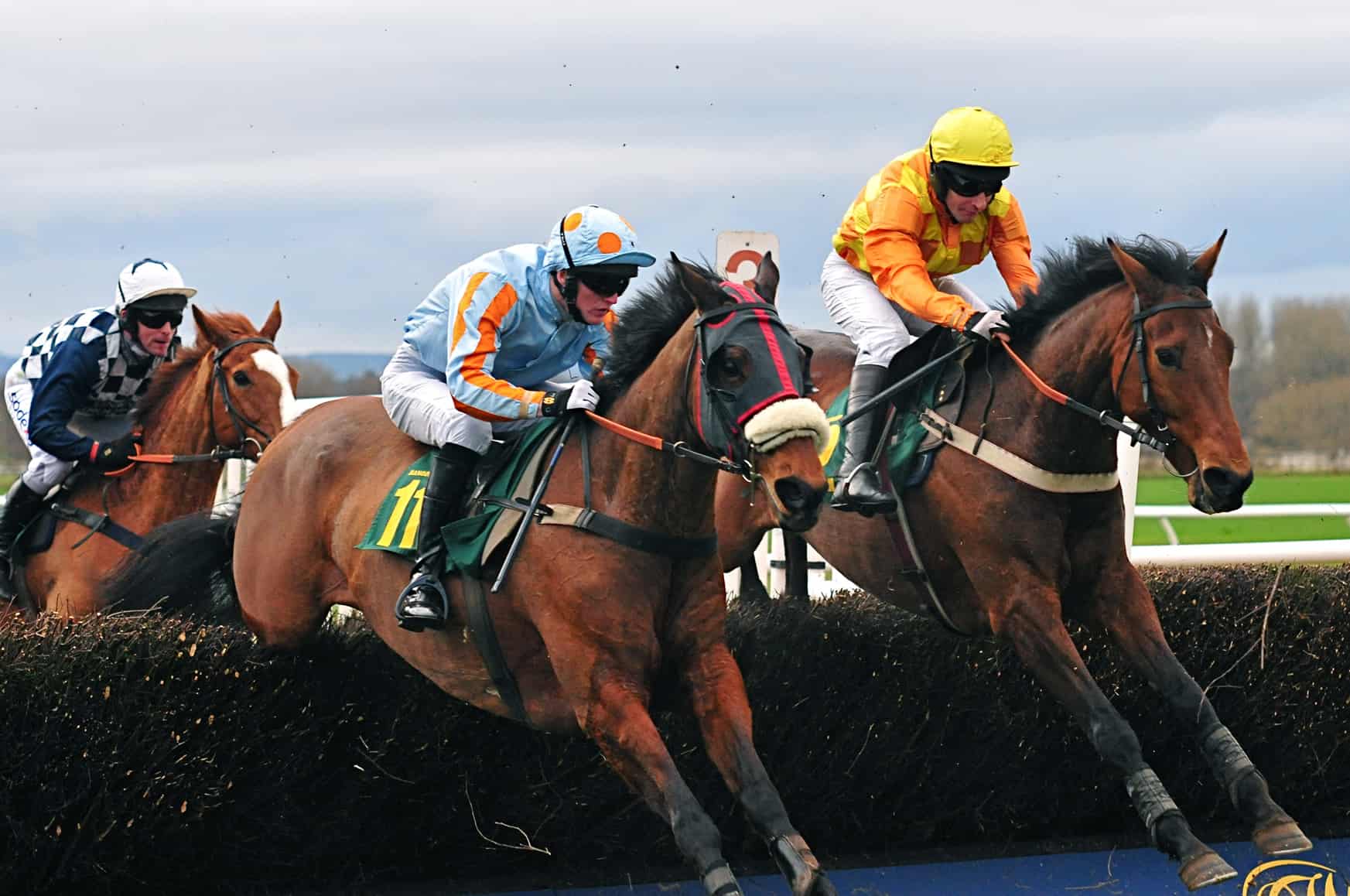Bright Yellows and Blues: The Safest Colors on the Track
- Topics: Behavior, Horse Care, Safety, Sports Medicine, Thoroughbreds, Welfare and Industry

The Thoroughbreds thunder down the track, neck-and-neck, on a grisly gray day. They’re about to reach the toughest of the hurdles on their steeplechase course, a water jump with a high brush fence with orange markings. Some people say the jump’s challenging because it’s so high, others because it’s so wide. But what if the real problem is much simpler? What if the horse just can’t see it well?
According to British researchers, fence color could make a significant difference in racehorses’ ability to visualize obstacles as they approach them. Coordinating jump colors with the equine range of color vision could lead to not only better performance but also better welfare and safer racing, said Martin Stevens, PhD, professor of sensory and evolutionary ecology and chair in the Centre for Ecology and Conservation at the University of Exeter, in Penryn, the U.K.
“Orange-type colors are not very visible against the rest of the fence background and environment,” Stevens said. “In contrast, other colors such as white and certain blues and fluorescent yellows are much more visible (to horses)
Create a free account with TheHorse.com to view this content.
TheHorse.com is home to thousands of free articles about horse health care. In order to access some of our exclusive free content, you must be signed into TheHorse.com.
Start your free account today!
Already have an account?
and continue reading.

Written by:
Christa Lesté-Lasserre, MA
Related Articles
Stay on top of the most recent Horse Health news with















